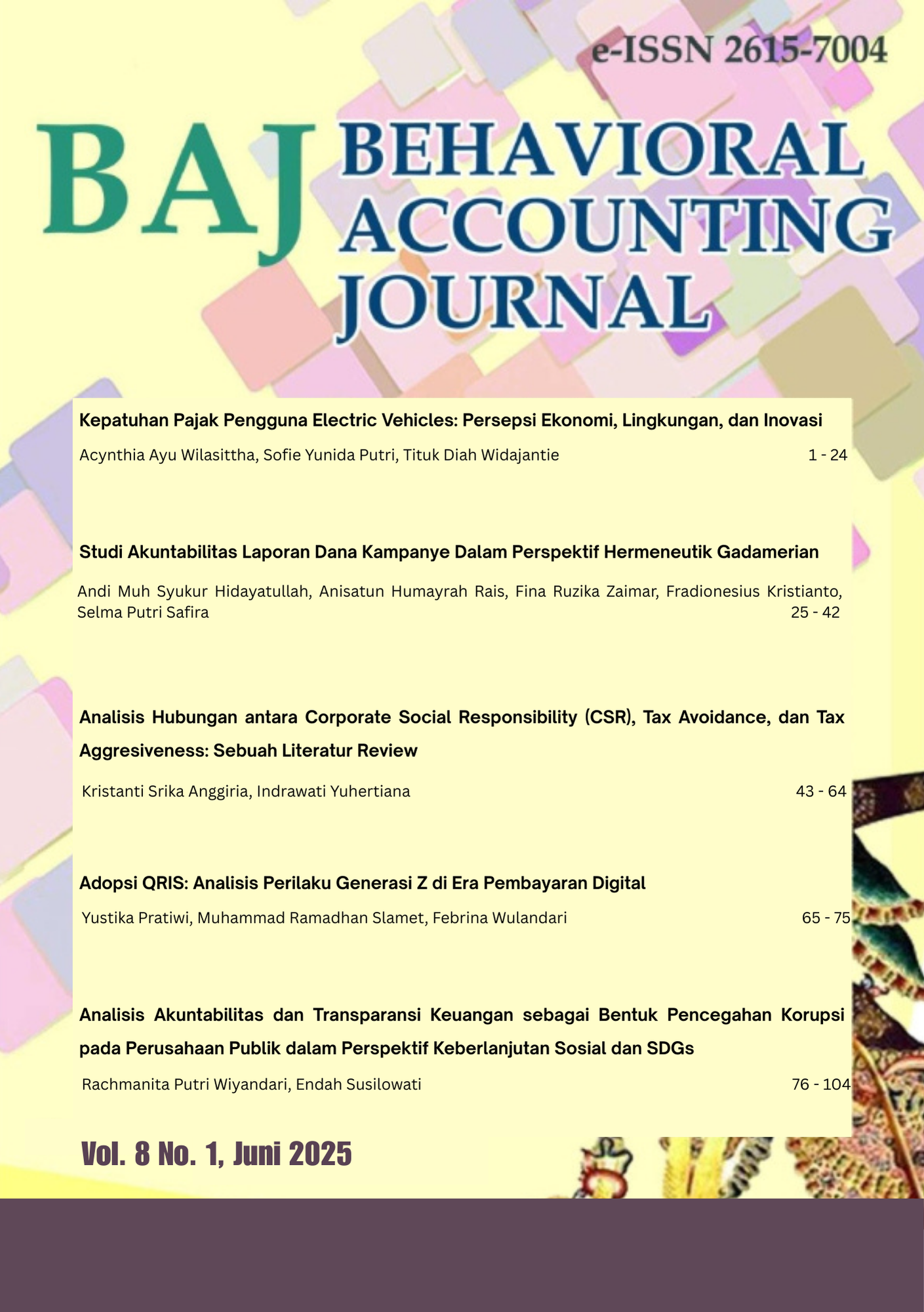Adopsi QRIS: Analisis Perilaku Generasi Z di Era Pembayaran Digital
DOI:
https://doi.org/10.33005/baj.v8i1.370Keywords:
QRIS, intention to use, perceived security, subjective norm , personal innovativeness, perceived ease of use, perceived usefulnessAbstract
Penelitian ini mengkaji faktor-faktor yang mempengaruhi niat Generasi Z untuk menggunakan (NUM) QRIS di Kota Batam. Penelitian ini menganalisis lima variabel kunci: persepsi keamanan (PKM), norma subjektif (NS), inovasi individu (IND), persepsi kemudahan penggunaan (PKP), dan persepsi kegunaan (PKG). Dengan pendekatan kuantitatif, penelitian ini mengumpulkan data melalui kuesioner yang dibagikan kepada 161 responden Generasi Z yang memiliki pengalaman sebelumnya dalam menggunakan QRIS. Hasil penelitian ini menyatakan PKP dan NS memengaruhi niat generasi Z dalam menggunakan QRIS. Selain itu, PKG, IND, dan PK tidak memengaruhi niat penggunaan QRIS pada generasi Z. Temuan ini mengimplikasikan bahwa bagi Generasi Z, kemudahan interaksi dan pengaruh lingkungan sosial adalah pendorong utama adopsi QRIS, sementara dari aspek kegunaan, inovasi, dan keamanan mungkin dianggap sebagai suatu hal yang wajib ada. Secara praktis, penelitian ini berkontribusi dengan menyarankan strategi promosi QRIS yang lebih efektif, menekankan pengalaman pengguna dan prevalensi di kalangan komunitas Gen Z. Secara teoritis, studi ini memperkaya literatur penerimaan teknologi dengan wawasan kontekstual tentang faktor adopsi di kalangan digital native untuk teknologi pembayaran yang telah mapan dan menyoroti pergeseran relevansi variabel tradisional dalam ekosistem terkoneksi.
This study investigates the factors influencing Generation Z's intention to use (NUM) QRIS in Batam City. The research examines five key variables: perceived usefulness (PKG), perceived ease of use (PKP), personal innovativeness (IND), subjective norm (NS), and perceived security (PKM). Adopting a quantitative approach, the study collected data through questionnaires distributed to 161 Gen Z respondents who had prior experience using QRIS. This study's findings indicate that both PKP and NS are influential factors in Generation Z's intention to use QRIS. Additionally, PKG, IND, and PK do not influence Generation Z's intention to use QRIS. These findings suggest that for Generation Z, ease of interaction and social influence are the primary drivers of QRIS adoption, while aspects of usefulness, innovation, and security are also considered essential. Practically, this research contributes by suggesting more effective QRIS promotion strategies that emphasize user experience and prevalence among the Gen Z community. Theoretically, this study enriches the literature on technology adoption by providing contextual insights into adoption factors among digital natives for established payment technologies and highlights the shifting relevance of traditional variables in connected ecosystems.
Downloads
Published
How to Cite
Issue
Section
License
Copyright (c) 2025 Yustika Pratiwi, Muhammad Ramadhan Slamet, Febrina Wulandari

This work is licensed under a Creative Commons Attribution 4.0 International License.

This work is licensed under a Creative Commons Attribution 4.0 International License.














